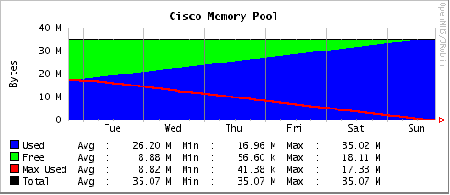I never saw a class in college called “How to Start a Corporation” so I never took it, and thus much of what I’ve done with the OpenNMS Group has been on the job training.
Most of what is required to incorporate, pay taxes, etc. can be understood with enough patience, online research and tools like Quickbooks coupled with a payroll service. I did take an accounting course in college so I had a leg up on double entry accounting, and I understand cash flow, balance sheets and profit/loss statements.
At the company our most powerful assets are our people, so I always want to take care of them. The easiest way is to pay them lots of money, but unfortunately in order to build the business I can’t pay them near what they are worth. If you’ll remember, our business plan is “spend less than you earn.”
So when we started I made sure to have lots of holidays. We recognize pretty much every national holiday and then some (like having the day after Thanksgiving as well as the day itself). At least half of us tend to work at least a few hours on any given holiday anyway, so our clients don’t go without attention, and it helps offset the average 60 to 80 hour work week (and doesn’t cost me anything).
About six months after we got started we were able to afford a proper healthcare plan. Again, being employee focused we cover 100% of the employee’s premium for medical, dental and vision, and offer a tax exempt way of contributing for family health insurance through payroll deduction.
Last year we started offering pager pay. Everyone who is in the “on call” rotation gets a little reimbursement in their paycheck to cover cell phone and internet costs. It isn’t much but it helps pay for, say, an iPhone.
This year we decided to set up a 401(k) plan. In the US a 401(k) is a tax deferred plan that lets one save for retirement and to migrate income tax obligations to later years (where revenue and thus amount of tax should be lower). Since most of that money is invested in the stock market (either directly, through index funds or mutual funds) now is the time to get into the program since the prices are so low.
While I have been a participant in 401(k) plans most of my professional life, this was the first time I was asked to set one up. Jeff pointed me to Costco, of all places, has a 401(k) plan that they offer through a company called ShareBuilder.
I have to say I am rather pleased so far with the process. The setup costs were less than one thousand dollars and the monthly fee is less than $100. I figured it was worth it to be able to offer the benefit to my team.
I should point out that the setup and monthly fees are only a portion of the costs associated with a 401(k). There are some hidden costs. The first is that one must have a bond to cover the account should the trustee (i.e. me) do something bad with the funds. That ran me about $100 a year.
But the main thing is that the 401(k) code has some strict limits on “highly compensated employees“. A highly compensated employee (HCE) is someone who makes over a particular amount of money or owns more than 5% of the business. I don’t have many of the former but a have a number of the latter. The amount the HCEs can contribute to the plan is controlled by the amount the non-HCEs in the company contribute, and there are penalties if a number of “tests” aren’t passed. These tests were designed to make sure that the executives in a company don’t benefit more than the rank and file, but they scared the heck out of me.
Stephanie, at ShareBuilder, told me about a number of “safe harbor” options which allow a company to be exempt from these tests, usually by setting up a profit sharing plan. If you have a small company like I do, I strongly suggest going with one of these options in order to take full advantage of the 401(k) for the owners.
Yeah, it costs at lot more, but it’s small change in the larger scheme of things, and my guys are worth it.


